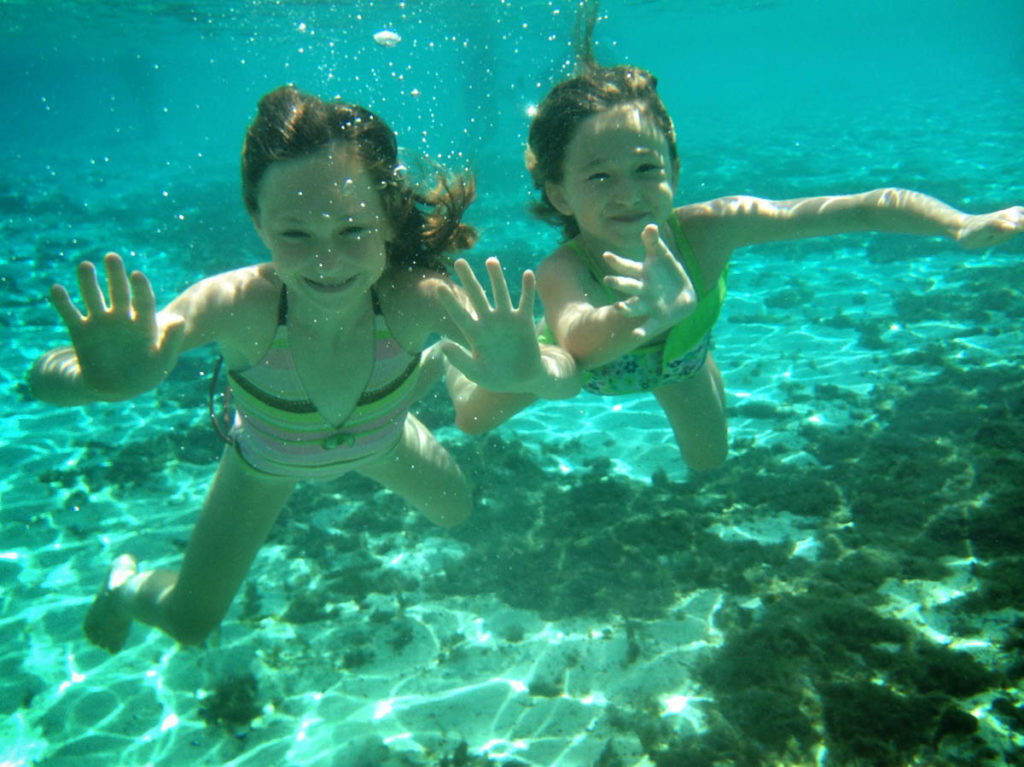Water and kids are like peanut butter and jam sandwiches! They go together!
With the advent of spring/summer coming in Canada, both parents and children look forward to summer fun water sports such as cottage rentals, boating, water skiing, snorkelling, water towables and just having some good old-fashioned fun in the water often with their friends. All parents do everything possible to keep their children healthy and safe, and this is especially important when it comes to children around water.
Every family should make learning to swim a priority. It’s a valuable life skill that can help avoid drowning, which is a leading cause of death among children. To keep time in the water comfortable and enjoyable, children and their parents must learn to swim. Children grow at different rates, so not everybody is able to start swimming lessons at the same time. Consider your child’s emotional intelligence, physical and developmental skill and weaknesses, and level of comfort in the water when making your decision. Swimming lessons do not guarantee that a child will not drown, however, they do make a child and thus a parent more at ease around water. If a child is near water, a registered life jacket is a must. The most important thing for a parent is “never take your eye off a child in the water”.
Children under the age of five are in particular danger of drowning, It just takes just 2 inches (6 cm) of water and they can drown. This means that drowning can occur in a sink, toilet bowl, fountains, buckets, inflatable pools, or small bodies of standing water around your house, such as rainwater ditches.
Some causes of near-drowning with children
- a lack of ability to swim; no swim lessons
- fear/panic near or in the water.
- leaving children unattended near bodies of water is a dangerous practice
- Bathtime kids can never be left unattended, even for a brief period of time

A drowning child (adult) is in a fight-or-flight mode for the first few seconds after inhaling water, as they struggle to breathe. The youngster will begin to hold their breath involuntarily as the airway closes to prevent further water from entering the lungs. This will last up to two minutes before they lose consciousness. They can still be revived with resuscitation and have a strong chance of survival at this stage. In water below 15°C, cold water shock is a real hazard. This can be fatal in minutes due to a number of strong, involuntary respiratory reflexes, such as a sudden rise in heart and blood pressure, which can lead to cardiac arrest, even in children. Hypothermia is often linked to cardiac arrest in drowned infants. Guidelines recommend that resuscitation be continued for at least 30 minutes in such children.
Drowning is the second leading cause of death in children under the age of four. CPR is luckily quite effective, with 66 percent of nearly drowned children surviving. And if the brain is to be resuscitated, seconds and minutes become imperative. Thanks to a groundbreaking sequence of oxygen therapies, a new procedure, can reverse brain damage in toddlers.
According to the Canadian Natural Drowning Prevention site in 2019, the majority of drowning cases (62%) occur during the summer months (June, July, and August), with 67 cases (10%) occurring during the winter months (December, January, February). (Adults and children)
We all know accidents happen, being prepared always around water is a must with young children. The last thing a parent(s) wants is their child to become a statistic.
Enjoy summer water fun and keep your loved ones safe!





